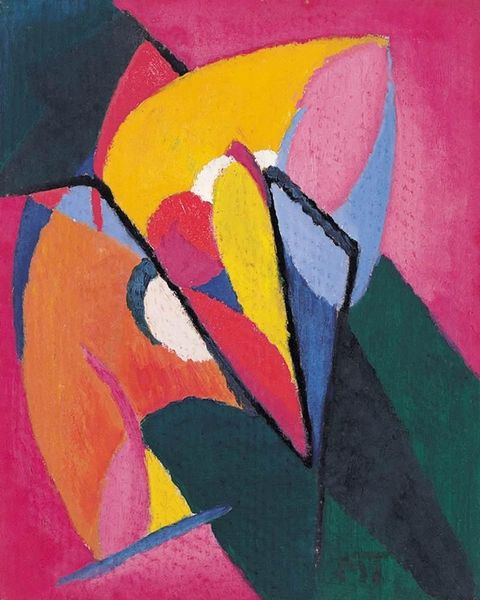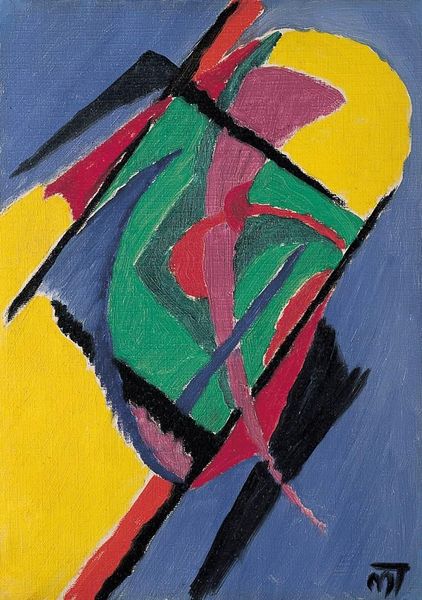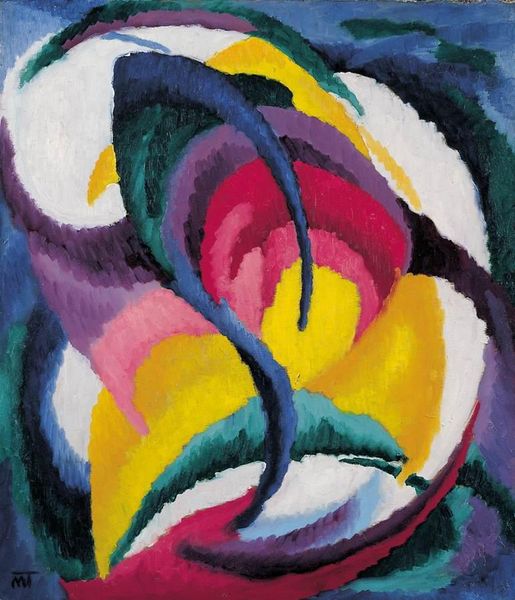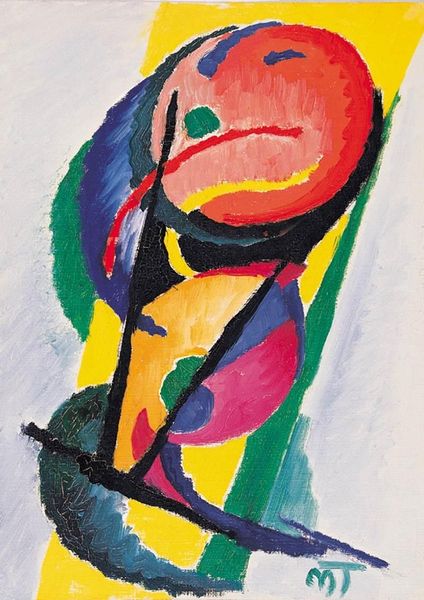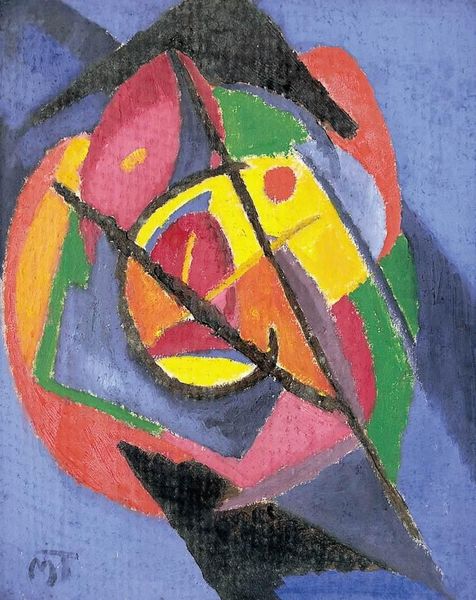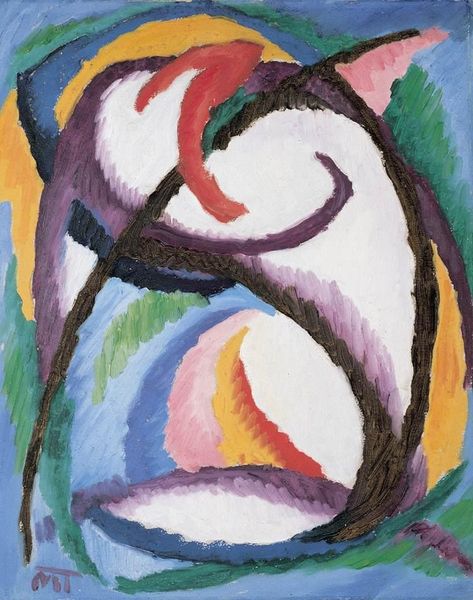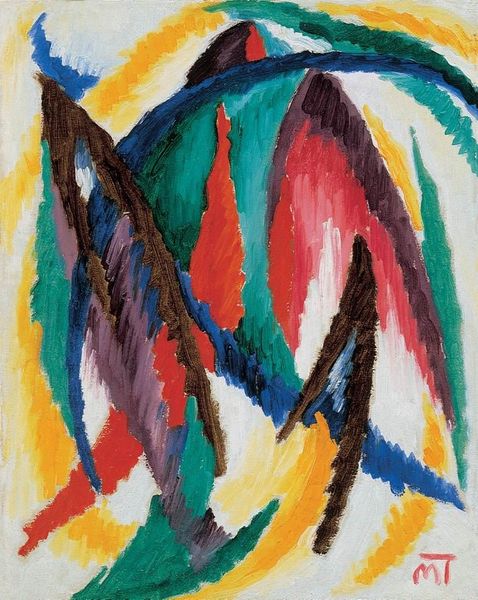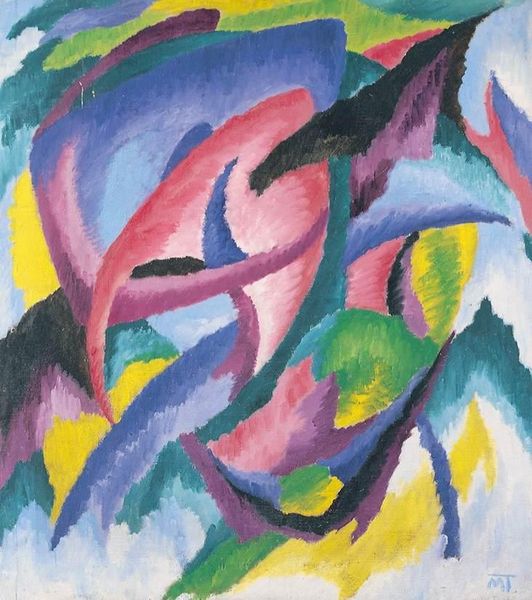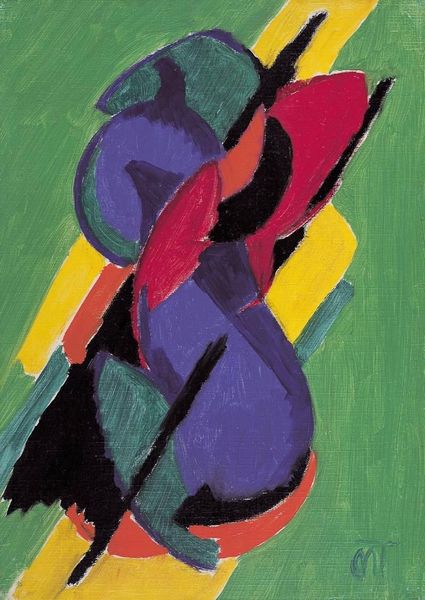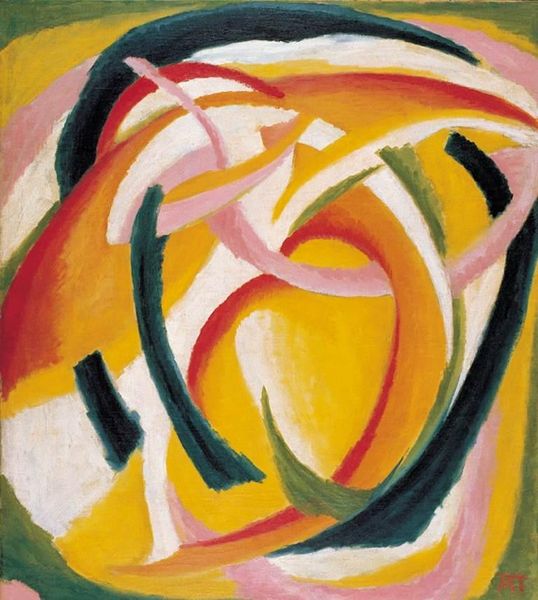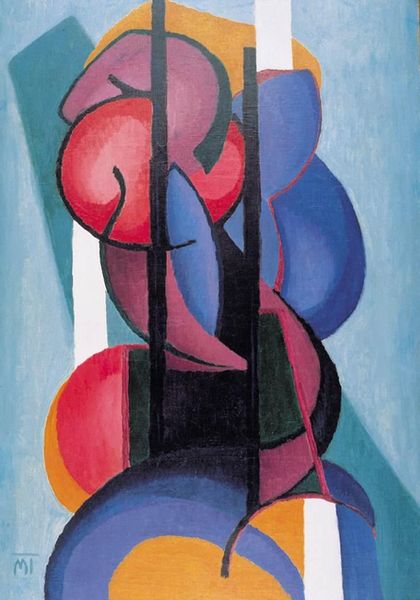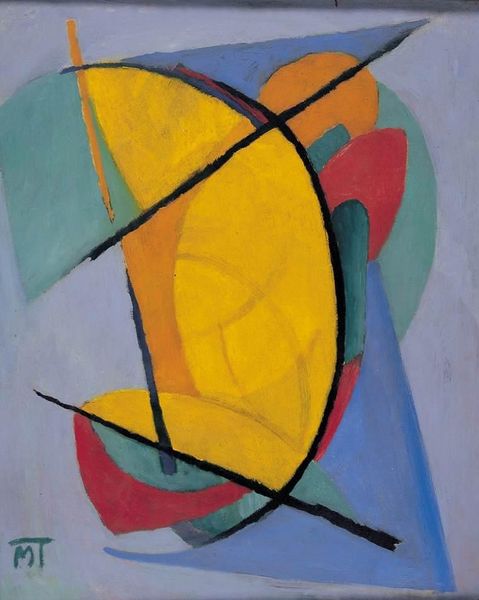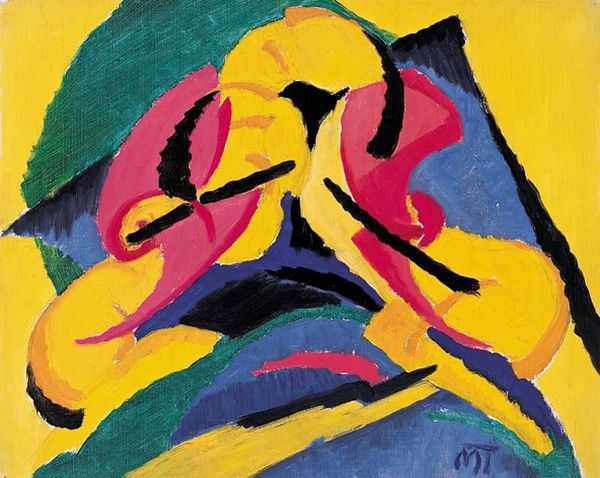
Copyright: Public domain US
Editor: Here we have János Mattis-Teutsch's "Composition," created in 1922 using painting and acrylic paint. It's an interesting piece, kind of playful with all the colors, but I'm unsure how to interpret it. What do you see in this work? Curator: Primarily, I'm drawn to the interaction between the forms themselves. Note how Mattis-Teutsch juxtaposes the sharp edges of the geometric shapes against the flowing, curvilinear lines. Does this create a sense of visual tension, in your opinion? Editor: It does a little, yes, like some kind of controlled chaos. But, I am still unsure, there is not enough resolution to feel the paint... Curator: Precisely. It is the organization of pictorial elements that dictates my impression: observe how the artist confines himself, limiting the colour pallete so effectively, almost reducing it to the primary with only an accent or two to provide tonal variations and interest. Editor: So it’s all about the interaction between line and shape, color and composition? Does this suggest anything about its value? Curator: Exactly! And this piece is significant because of how purely it represents certain strains of Expressionism and Modernism. One way to judge an artistic piece is by understanding how its arrangement, rather than cultural values, constitutes the main purpose of its production. Is this helpful to consider for future interpretation? Editor: Yes, that's actually a very helpful way to consider Abstract Expressionism and Modernism. I suppose, sometimes, line, shape and tonal arrangement is, ultimately, enough. Thank you. Curator: A fruitful reflection, indeed. The reduction to formalistic elements becomes, in this work, an expressive gesture.
Comments
No comments
Be the first to comment and join the conversation on the ultimate creative platform.
